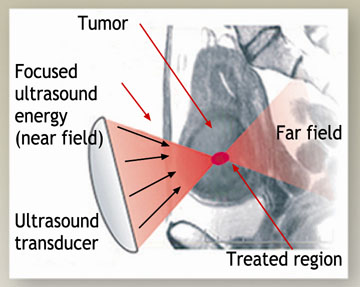The powerful union of focused ultrasound and magnetic resonance imaging (MRI) has created a new approach to noninvasive surgery. By using this integrated therapy delivery system, the physician can correctly localize tumors, optimally target acoustic energy, monitor energy deposition in real time, and accurately control the deposited thermal dose within the entire tumor volume. This satisfies the requirements for "ideal surgery." In a real sense, MRI provides the "road map" by which focused ultrasound surgery (FUS) is followed. The advantages of MRI over ultrasound guidance in controlling FUS lie in the more sensitive detection of tumor target, the real-time detection of tissue temperature, and the confirmation of thermally induced tissue changes-powerful features that eventually can replace the traditional surgical approach. Applying software that connects the therapy and imaging system (the "Dosimetry Workstation"), the physician can generate an entire treatment plan from quantifying temperature changes to positioning the therapy transducer. The noninvasive debulking of tumors without disturbing adjacent, functionally intact structures is thereby accomplished.

EUROPEPMC.ORG
Abstract: The powerful union of focused ultrasound and magnetic resonance imaging (MRI) has created a new approach to noninvasive…

